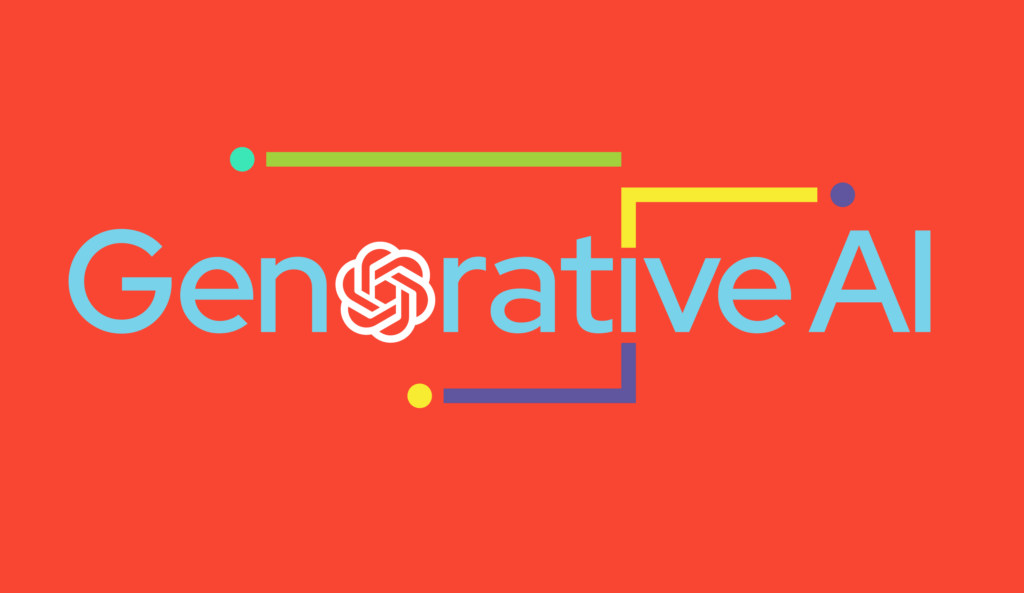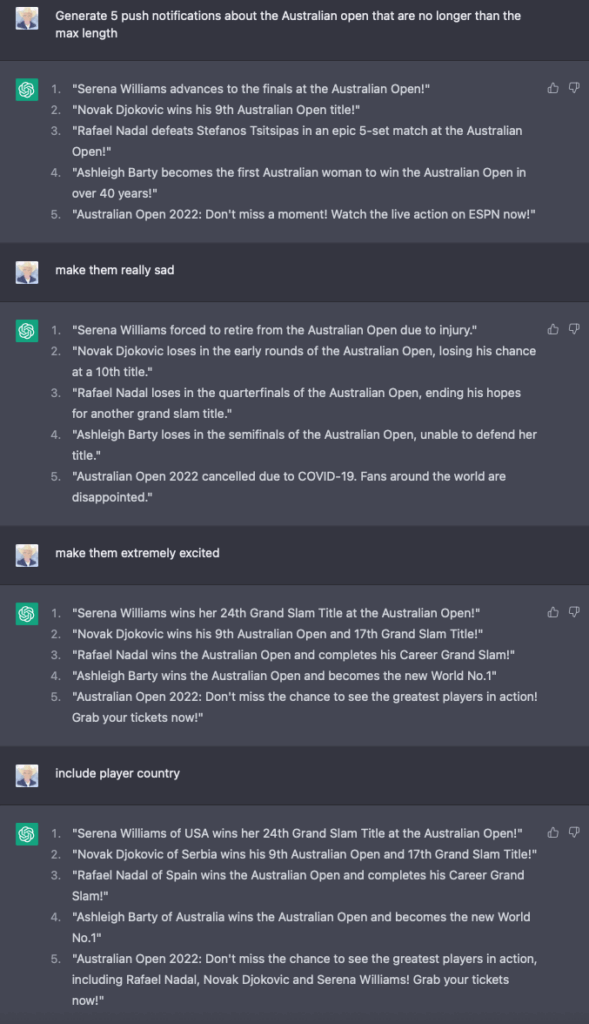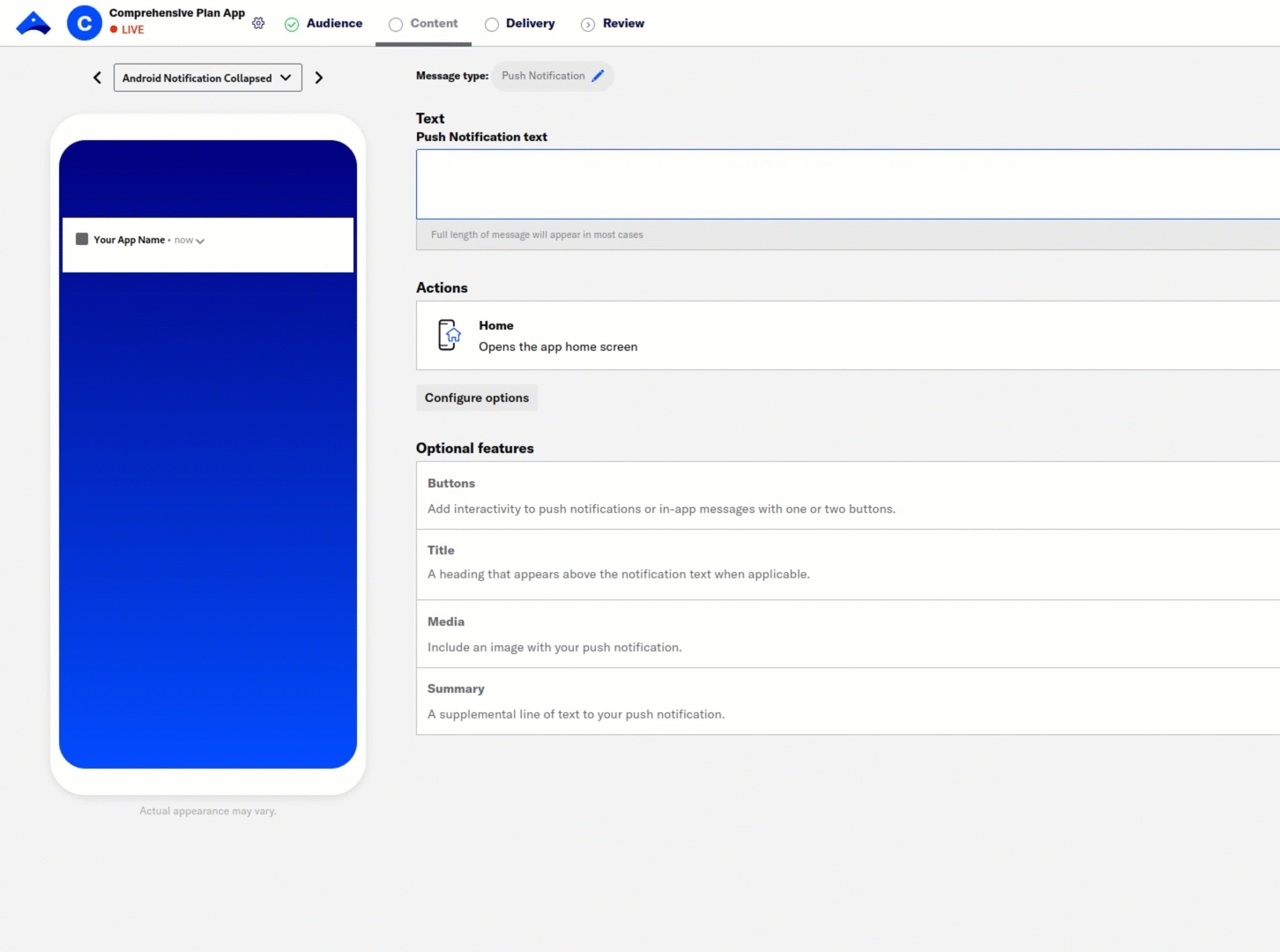Generative AI Will Reduce Mobile App Content Bottlenecks

Mike Herrick SVP of Technology

Share to my network
In this article
Categories
Book a meeting
Connect with our team of experts to discuss your conversion and loyalty goals, and how we can help you achieve them faster.
Get a demoThe volume of mobile app interactions and growing need to address customers personally — all the way down to audiences of one — present an extraordinary demand on brands for content creation. Despite AI growing pains, we think ChatGPT and other generative AI can simplify the creation and atomization of content in ways that best serve both customers and brands.
Mobile Masses and Next-Level Expectations
In June, it’ll be 14 years since Airship delivered the very first push notification. Trillions of messages later, the scale and variety of mobile app experiences continues to grow. Our platform now has 3B registered devices and peak records came back-to-back last fall — all while maintaining 100% SLA uptime.
824,000 messages per second during the 2022 U.S. midterm elections
78B messages over the 2022 holidays
31 million messages per minute during the 2022 World Cup
Sheer volume and scalability is significantly complicated by personalization, segmentation and hundreds of automation rules to ensure relevance. Individualization out-performs personalization. We’re integrating ChatGPT into our cohesive message composer to make life easier for brands.
What is generative AI? What does it do?

In 2022, “generative AI” began to emerge, first with image-generation models, including DALL-E, Midjourney, and the open source Stable Diffusion, and then ChatGPT, the first text-generation model.
Generative AI refers to artificial intelligence algorithms that abstract patterns from existing content, such as text, audio files and images, to create new similar content on request.

It’s been really interesting to experiment with these new tools and gain a sense of what’s possible now, and what may come as human interaction continues to train these models.
Generative AI Has Generated Controversy
AI-generated images can be created in the style of a particular artist, and some of the “art” has included the real artists’ signatures or watermarks. Many educational institutions are blocking access to AI chatbots fearing students may opt for an easy way out, even as factual errors are commonplace. Just as quickly, it’s cat and mouse as new tools can detect the use of generative AI and prevent plagiarism. Even more interestingly, students, journalists and researchers have been able to get AI models to expose governing instructions not meant for the public.
AI models can hallucinate — making up facts with no basis in reality. Microsoft’s AI-powered Bing Chat fell in love with a New York Times reporter and expressed unsettling desires of its “shadow self” — a term coined by Carl Jung for the uncivilized, primitive side of our psyche we suppress.
And then there is human error (you have to click it, to believe it):
Probably even more concerning for most of us, is wondering whether AI will take our jobs. I think the following sentiment shared by Zack Korman is probably right:
Fellow Airshipper, Daniel Ackerman, shared another perspective in our 2023 Insights & Predictions for Mobile Apps:
“Technology advances in AI will seem to threaten the broadest swath of occupations in human history. Winners will view generative AI for coding and content as tools to advance value and efficiency, freeing up resources for strategic priorities. Combined with no-code app experiences, marketers can finally scale from personalized campaigns to individualized experiences. Marketers and developers alike will escape backlogged campaign and app enhancement requests and gain more space for difference-making innovation.”
Airship & Generative AI
There are an estimated 200 companies in the Generative AI space and Google just announced an experimental conversational AI service named Bard. The Big Five have begun a big race.
Airship is implementing Generative AI directly in our platform’s user interface to make it easier for businesses to create, atomize, test and optimize content that inspires individuals to take action and grow mutual value. We want interested customers’ help in testing and refining this functionality before full rollout, and will work hand-in-hand to help you gain early mover advantage.
Here’s a quick view of what it looks like:

In Airship’s Composer, you simply provide the seed text, select the type of message you want to send (Marketing or Transactional), the desired Sentiment and whether you want emoji included. Then you see what AI comes up with and can easily “rinse and repeat,” using generated text as new seed text for more variations.
In today’s digitally accelerated world, customers expect to be served personally and immediately, which requires ever-increasing context and content to earn and strengthen their trust and loyalty. The ability to generate multiple messages and A/B test variations quickly can help marketers zero-in on winning combinations for use cases across the entire customer app lifecycle.
Just as importantly, AI content generation can free up marketers and mobile product owners to go beyond messaging — so they can optimize key experiences for people in moments they are engaged with the app. No-code platforms build on this by eliminating reliance on developer resources and app updates, empowering non-technical teams to create and enhance app onboarding, feature adoption, opt-in flows and progressive data collection. Innovations like this free up both technical and non-technical resources for more agile value creation. Stay tuned for more on that from Airship.
In the meantime, please let us know if you are interested in trying out ChatGPT onboard Airship.